Low doses of THC and CBD may help fight bladder cancer and improve quality of life. We looked into the current research and discovered some surprising anti-cancer effects of microdosed cannabis.
Experimental studies showed that the activation of cannabinoid receptors by cannabinoids is antitumorigenic in most cases, i.e., it inhibits tumor cell proliferation, induces apoptosis in vitro, and blocks angiogenesis and tumor invasion/metastasis in vivo. (Dariš, et. al.)
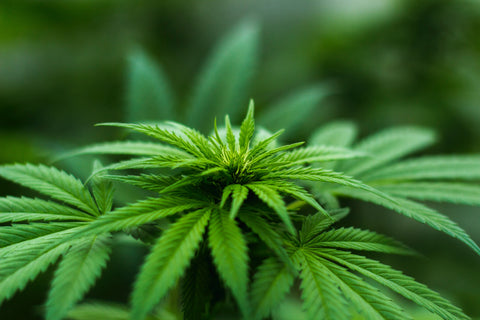
What’s even more interesting is that small amounts of cannabis seem to have more health benefits than higher doses. This means no to smoking cannabis and a huge yes to our low-dose THC edibles.
Whether you're looking for a natural way to fight stress and anxiety, relieve pain, or support your brain health, microdosing cannabis might be the answer. Try our Delta 9 Bliss gummies, with only 5 mg of THC and CBD, and experience the most soothing honeydew-infused gummies.
What Is Bladder Cancer?
Bladder cancer is a type of cancer that begins in the cells of the bladder. The bladder is an organ located in the lower abdomen that stores urine produced by the kidneys. The bladder is hollow, muscular, and lined with transitional epithelial cells.
In a healthy bladder, these cells grow and divide in an orderly way to replace old cells. This process is called cell proliferation, and it’s a natural and important part of tissue growth and repair throughout the body.
Specifically, cell proliferation in the bladder is vital for:
- Replacing old or damaged urothelial cells
- Allowing the bladder to stretch and contract to store and release urine
- Healing any minor injuries to the bladder lining
- Ensuring enough healthy cells are present to carry out the bladder's roles of storing urine and preventing reflux back up to the kidneys
In bladder cancer, normal cell proliferation is disrupted, causing cells to grow uncontrollably and form tumors. As they grow, bladder tumors invade deeper layers of the bladder wall, and some tumor cells may even break off and spread through the lymph system or bloodstream to other parts of the body.
According to the National Cancer Institute, bladder cancer is relatively common. It is one of the top 10 most common cancers in the United States, with over 80,000 new cases diagnosed annually. Based on data from 2013-2019, the five-year relative survival rate for bladder cancer is 77.9%.
Types of Bladder Cancer
Bladder cancer is classified by how deeply it has penetrated into the bladder wall layers. In this respect, there are non-muscle-invasive and muscle-invasive bladder cancers. Non-muscle-invasive bladder cancer is contained in the inner mucosal layer, while muscle-invasive types have grown into deeper muscle layers.
We can also categorize bladder cancer based on the type of cells from which it originates. These include:
- Urothelial carcinoma (transitional cell carcinoma) is the most common type, accounting for over 90% of bladder cancer cases. It arises from the urothelial cells that line the inside of the bladder. Based on growth patterns, it can be papillary (wart-like growths on the bladder surface) or flat carcinoma in situ (CIS).
- Squamous cell carcinoma develops from the squamous cells that may be present in the bladder lining. Squamous cells make up the outermost layers of skin and also line certain internal organs, like the bladder. In the bladder, they help protect underlying tissue. This type of cancer is rare and accounts for about 4% of bladder cancers.
- Adenocarcinoma develops from bladder gland cells and is very rare, making up only about 2% of cases. This type tends to be highly aggressive.
- Small cell carcinoma is another rare neuroendocrine tumor that is typically very aggressive and metastatic when found in the bladder.
- Sarcoma is a very rare type of bladder cancer that develops from muscle or connective tissues in the bladder.
Bladder cancers can be further classified into grades based on how the cancer cells appear when viewed through a microscope.
- Low-grade bladder cancer has cells that are closer in appearance and organization to normal cells. A low-grade tumor usually grows more slowly and is less likely to invade the muscular wall of the bladder. In terms of treatment, low-grade non-invasive urothelial carcinomas have the best outlook.
- High-grade bladder cancer has abnormal-looking cells that lack any resemblance to normal-appearing tissues. A high-grade tumor tends to grow more aggressively than a low-grade tumor and may be more likely to spread to the muscular wall of the bladder and other tissues and organs. High-grade muscle-invasive cancers can be more difficult to treat.
The bladder can be the site of metastatic spread from cancers originating elsewhere in the body, like the colon, prostate, or cervix.
What Causes Bladder Cancer?
The exact cause of bladder cancer is not always clear, but there are several known risk factors that can increase the likelihood of developing it.
- Smoking is the most significant risk factor for bladder cancer. Chemicals in tobacco are absorbed into the bloodstream and filtered by the kidneys, where they can irritate the lining of the bladder.
- Occupational exposure to certain chemicals, such as those used in the dye, rubber, and leather industries, can increase the risk.
- Bladder cancer is more common in older individuals. The majority of cases occur after the age of 55.
- Men are more likely to develop bladder cancer than women.
- Having a family history of bladder cancer may also raise the risk.
What Are the Symptoms of Bladder Cancer?
The symptoms of bladder cancer are often unique to each person. The most common symptoms are:
- Blood in the urine (hematuria)
- Frequent urination
- Pain or discomfort during urination
- Urgency to urinate
- Pelvic pain
Bladder cancer can be lethal if not detected and treated in its early stages. The prognosis depends on the stage at which it is diagnosed and the specific type of bladder cancer.
How Is Bladder Cancer Treated?
Treatment for bladder cancer depends on the stage and grade of the cancer, the patient's overall health, and their preferences. Bladder cancer may be treated by:
- Surgery
- Chemotherapy
- Radiation therapy
- Immunotherapy
- Targeted therapy
If detected early and treated promptly, bladder cancer often has a good prognosis. Unfortunately, certain cancer treatments, like chemotherapy, may be quite aggressive and cause difficult side effects. While they are successful at killing tumor cells, such treatments can significantly impact the quality of life of cancer patients.
Many people turn to complementary therapies to help manage side effects and symptoms. Cannabis may help relieve pain, nausea, loss of appetite, and anxiety caused by treatments like chemotherapy.
Some early research also indicates certain cannabis compounds may have anti-tumor properties and employ a wide range of mechanisms to slow down cancer’s progression. Lower THC doses achieve even better results as your body gradually adapts to the cannabinoid’s presence and improves your health without the heavy psychoactivity typically associated with higher THC levels.
For a reliable (and delicious) introduction to the world of microdosing cannabis, we suggest our low-dose THC Energy edibles. Only 2.5 mg of THC per gummy offers therapeutic benefits while minimizing intoxication and maximizing the experience.
Now might be a good time to read our in-depth guide to Delta-9-tetrahydrocannabinol (Delta 9 THC) and learn about its effects and benefits.
How Does Cannabis Fight Cancer?
A 2022 systematic review and meta-analysis of the anti-cancer properties of cannabis suggested that THC and CBD demonstrate potential for inhibiting tumor growth and metastasis. Hinz and Ramer explained that these compounds act synergistically with traditional chemotherapeutic agents, enhancing their effects and improving the chances of successful treatment.
We’ll be discussing the effects and benefits of cannabidiol (CBD) on cancer, along with those of THC. In fact, THC and CBD might do their best therapeutic work when combined. Find out why the effects of Delta 9 and cannabidiol make such a good combo, especially for bladder cancer patients.
THC and CBD Have Anti-Metastatic Effects
Metastasis is the spread of cancer cells from the original tumor site to other parts of the body. THC and CBD seem to have strong anti-metastatic properties: they may inhibit metastasis, stop cancer cells from migrating, invading tissues, or stimulating new blood vessel formation to "feed" remote tumors.
Preet, et. al. found that “THC was able to inhibit tumor growth and lung metastases in a murine model of lung cancer.” Honarmand, et. al. suggested that “treatment with CBD reduced colon cancer cell proliferation, induced apoptosis, and also had anti-metastatic and anti-angiogenesis effects.”
As you can see, cannabis may even help fight lung cancer and colon cancer.
The Pro-Apoptotic Properties of Cannabis
Apoptosis refers to the programmed cell death or self-destruction of cells. You want maximum cell death for cancer cells, which is why apoptosis is such a hot topic. Research indicates that THC and CBD may act as pro-apoptotic agents by interfering with signaling pathways that allow cancer cells to proliferate and survive. This could make tumor cells self-destruct.
A 2005 study showed that Delta 9 THC can promote apoptosis in glioblastoma multiforme by selectively targeting GBM cells without significantly affecting normal brain cells. The results revealed that “treatment with THC produced dose-dependent inhibition of cell viability and proliferation.”
An observational study found that a synthetic cannabinoid reduced the amount of phosphorylated BAD protein. Phosphorylation of BAD has been linked to cancer cell survival pathways and drug resistance.
Thus, we suggest that the increase of proapoptotic BAD activity is an important link between the inhibition of survival pathways and an onset of execution phase of cannabinoid-induced glioma cell death.
Cannabis may be able to induce mitochondrial dysfunction in cancer cells. Mitochondria are important for making energy in cells and controlling cell death, and without well-functioning mitochondria, cancer cells are crippled. Mould, et. al. discovered “that CBD can modulate mitochondrial function and morphology in a dose-dependent manner,” causing mitochondrial dysfunction and apoptosis in cancer cells.
The Anti-Angiogenesis Action of Cannabinoids
Angiogenesis is the formation of new blood vessels from existing ones. This process is essential for tumor growth and metastasis, as new blood vessels provide oxygen and nutrients that cancer cells need to spread and thrive.
Some research shows that angiogenesis depends on signaling between tumor cells and endothelial cells that line blood vessels. THC and CBD may interfere with these signaling pathways that stimulate new vessel growth. They may also inhibit the release of pro-angiogenic factors from tumor cells that encourage new blood vessel formation.
Other studies showed that cannabinoids can suppress angiogenesis in malignant brain tumors. Cannabis also seems to inhibit the expression of proangiogenic factors and an enzyme known as matrix metalloproteinase-2 in cancer.
…at least two mechanisms may be involved in this cannabinoid action: the direct inhibition of vascular endothelial cell migration and survival as well as the decrease of the expression of proangiogenic factors (vascular endothelial growth factor and angiopoietin-2) and matrix metalloproteinase-2 in the tumors. (Blázquez, et. al.)
CBD in particular may block the activation of endothelial cells by cancer cells, preventing them from starting to grow and elongate into new vessel offshoots.
It seems that cannabis compounds could also potentially support the immune system in its fight against tumors. The endocannabinoid system (ECS) plays an important role here.
Product QUIZ
Need help deciding what product is best for you? Take our quiz, just three questions until your perfect match!
What Does the Endocannabinoid System Do?
The endocannabinoid system is a complex network of chemical signals and receptors that “serves pivotal roles in a diverse range of physiological and pathophysiological states, including behavior, pain, schizophrenia, obesity, Alzheimer disease, multiple sclerosis and cardiovascular disease.” (Lerner, et. al.)
Its main role is to maintain homeostasis by regulating important bodily functions:
- Mood
- Sleep
- Appetite
- Pain perception
- Reproductive health
- Immunological response
While our bodies naturally produce endocannabinoids, phytocannabinoids found in plants like cannabis interact with our ECS in the same way. They bind to the endocannabinoid receptors and influence pain management, sleep, appetite, the immune response, and many other biochemical changes in the body. They target the ECS and slow tumor growth.
Delta 9 has a similar structure to the endocannabinoids and binds strongly to cannabinoid receptors, specifically CB1 and CB2 receptors. This binding triggers cellular responses that produce diverse effects in the body.
While higher doses may cause psychoactive effects, low amounts of THC produce a wide range of therapeutic benefits. That’s why we simply adore these beneficial effects of cannabis use in a smaller, controlled, and precisely dosed manner.
Many of our products contain low amounts of Delta 9. Ten milligrams of THC and CBD in our Euphoria gummies give you a mild euphoric experience, pleasant pain relief, and release from stress and anxiety.
Can Cannabis Help With Bladder Cancer?
We had to dig hard to unearth evidence that shows how beneficial low doses of THC and CBD can be for bladder cancer patients. Here’s what we discovered:
- In lab experiments, THC and CBD may inhibit bladder cancer cell growth and spread.
- A 2022 study found that cannflavin A, a chemical found in Cannabis sativa, has antitumor properties in bladder cancer. Researchers examined the effects of cannflavin A on bladder cancer treatment and its ability to work synergistically with chemotherapy drugs like gemcitabine and cisplatin: “the flavonoid cannflavin A, can be cytotoxic to human bladder transitional carcinoma cells… This compound can exert synergistic effects when combined with other agents.”
- A 2021 study suggested that CBD effectively causes cell apoptosis in bladder cancer. The findings of the study revealed that “CBD could inhibit proliferation on BC cells, including T24, UM-UC-3, and 5637.”
- One study found that limonene, a natural terpene found in the cannabis plant, has shown promise in fighting bladder cancer cells. “In the bladder cancer cell line, limonene caused G2/M cell cycle arrest, decreased migration, and metastasis, and increased Bax and caspase 3, thus inducing apoptosis. It inhibited PI3K/AKT, induced autophagy and enhanced sensitivity to docetaxel in in vitro cancer cell models.” (Cherkasova, et. al.) This means limonene stops bladder cancer cells from dividing and spreading, encourages them to self-destruct, and makes them more responsive to chemotherapy.
Remember that microdoses have more benefits than higher doses and that our edibles are the best way to consume these ultra-low yet potent amounts of THC and CBD.
Low THC doses are definitely far healthier than smoking. There are no risks of developing cancer here because our quality THC gummies contain zero tobacco or other harmful chemicals. Even if you choose THC-free edibles, like our awesome collection of CBD gummies, you’re safe from ingesting any cancer-causing chemical.
How Does Cannabis Improve Cancer Patients’ Lives?
Chemotherapy and other treatments can have a substantial negative impact on the lives of patients with cancer. Many people turn to cannabis to alleviate therapy-related side effects.
Here’s how our low-dose edibles with THC, CBD, and other cannabis compounds can help those with with bladder cancer find relief:
- Cannabis edibles help alleviate pain. The cancer itself can cause chronic pain from tumors pressing on nerves and organs. Cancer patients undergoing chemotherapy often experience significant chronic pain that stems from painful nerve damage or neuropathy. A 2015 study on the use of cannabis and cannabinoids for treating chronic pain conditions found that cannabis might be an effective way to relieve neuropathic pain, arthritis pain, and cancer pain. THC and CBD also have anti-inflammatory properties that can relieve pain at its source.
- THC stimulates appetite and reduces weight loss in cancer patients. Delta 9 THC interacts with the CB1 receptors in the brain's hypothalamus. This stimulates the release of the hormone ghrelin, which triggers hunger. According to a 2022 study review, THC and CBD “have indications as appetite stimulants, antiemetics, cannabis addiction, sleep apnea and analgesics and are approved by the FDA for HIV/AIDS-induced weight loss of appetite and chemotherapy-induced nausea and vomiting.”
- Low-dose cannabis reduces nausea and vomiting. These are common outcomes of cancer treatment, especially chemotherapy. The cytotoxic chemotherapy drugs designed to kill cancer cells also damage healthy, fast-dividing cells in the body, like those in the gut, triggering nausea. A 2020 clinical trial found that “the addition of oral THC:CBD to standard antiemetics was associated with less nausea and vomiting.” The cannabinoids exert antiemetic effects via the agonism of cannabinoid receptors (CB1 and CB2). Clinical trials have demonstrated the benefits of nabilone for cancer chemotherapy patients. (Ware, et. al.)
- CBD is known for its relaxing and anti-anxiety effects—and that’s exactly what cancer patients need day-to-day. Chemotherapy can be harsh on patients and have a multitude of adverse effects. But we have good news for people with cancer: microdosing cannabis is great for improving mental health. According to Crippa, et. al., “CBD reduces anxiety in [generalized social anxiety disorder] and this is related to its effects on activity in limbic and paralimbic brain areas.”
Our Relax Plus gummies are our favorite cannabis product to boost all those “happy molecules” in the brain and promote relaxation. With 25 mg of premium CBD and a touch of Delta 9, these delicious gummies give you a moment of respite from the challenges of cancer treatment.
Where to Buy the Best Cannabis Edibles
It’s understandable to want only the highest quality cannabis products that you can trust. There are plenty of brands out there that cut corners on the quality and purity of their edibles. That’s why choosing a reputable brand is kind of important.
With nama, you can rest assured that our edibles are third-party lab tested for quality and potency. We are transparent about our ingredients and sourcing—our hemp comes from organic US farms, so you know you're getting a safe and high-quality product that you can trust. Locally sourced plants tend to be fresher, too, which is one of our huge advantages.
Another is the lack of artificial colors, flavors, or preservatives. We use only organic, clean, and non-GMO ingredients.
Order at nama and see for yourself why our cannabis edibles are the best.
Bladder Cancer FAQ
Can cannabis cause cancer?
There is no conclusive evidence that cannabis itself causes cancer. However, some factors contribute to the misconception that cannabis may be carcinogenic:
- Smoking cannabis introduces combustion byproducts like tar and aromatic hydrocarbons that can be irritants and carcinogens when inhaled regularly. This is likely what increases cancer risk for chronic cannabis smokers, not the plant compounds like THC and CBD themselves.
- Early cell line and animal studies showing anti-tumor effects of cannabinoids may have led to exaggerated extrapolations that cannabis can completely cure cancer on its own. While THC, CBD, and other cannabis compounds do show potent anti-tumor properties, we can’t say cannabis can cure cancer.
- It’s difficult to say whether heavy exposure to cannabis alone increases the risk of cancer. Many chronic cannabis smokers also smoke tobacco, drink alcohol, or have other potentially cancer-causing habits that increase the risk. These confounding lifestyle factors make direct causation difficult to isolate.
A 2019 study wanted to understand the association between cannabis use and cancer development. Researchers looked at 25 studies on different types of cancer: lung cancer, head and neck cancer, oral cancer, and testicular cancer.
The results showed that regular marijuana use was linked to an increased risk of developing testicular germ cell tumors (a type of testicular cancer). However, the strength of this evidence was considered inconclusive and low.
The researchers also found a weak link between marijuana use and the types of cancer mentioned. It wasn’t clear whether long-term cannabis use causes any type of cancer or if marijuana levels or frequency of use matter.
Not only were these studies inconclusive, but they were based on recreational doses of cannabis, far above what we recommend for microdosing. From what we can tell, microdosing gives you all of the benefits without any of the downsides.
Can cannabis cause bladder pain?
Current medical research does not recognize a direct association between cannabis use and cancer.
Can cannabis oil help with bladder cancer?
Research on the potential benefits of cannabis oil, particularly its cannabinoids like CBD and THC, in treating bladder cancer is ongoing. Some studies reveal the anti-tumoral action of cannabinoids, but more research is needed to determine their effectiveness as a treatment for bladder cancer.
Is CBD bad for the bladder?
Cannabidiol, one of the compounds found in the cannabis plant, is generally considered safe for the bladder. CBD doesn't have the psychoactive properties of THC and is not known to cause bladder issues.
Can you live a long life with bladder cancer?
The prognosis for bladder cancer depends on several factors, including the stage at which it's diagnosed and the specific type of bladder cancer. Many individuals with early-stage bladder cancer can live long and healthy lives with appropriate treatment and regular follow-up care.
What is a negative side effect of CBD?
While CBD is generally considered safe, some people may experience side effects, including dizziness, dry mouth, changes in appetite, diarrhea, and fatigue. These side effects are typically mild and temporary.
Does THC relax the bladder?
THC can have muscle-relaxing properties, but its direct effect on the bladder is not well-documented. It may have an impact on bladder function, which could vary among individuals.
Is CBD good or bad for the kidneys?
Current research suggests that CBD and cannabis in general are safe for kidney function. There's no strong evidence to suggest that CBD has adverse effects on the kidneys. In fact, more research suggests that the anti-tumoral actions of cannabinoids may help treat kidney cancer.
Individual responses to cannabis and its components are different for each person, so consult with a healthcare professional before starting with cannabis use, especially if you’re dealing with specific health concerns like bladder cancer or kidney issues.
Resources
Dariš, B., Verboten, M. T., Knez, E., & Ferk, P. (n.d.). Cannabinoids in cancer treatment: Therapeutic potential and legislation. PubMed Central (PMC). https://doi.org/10.17305/bjbms.2018.3532
Cancer of the Urinary Bladder - Cancer Stat Facts. (n.d.). SEER. https://seer.cancer.gov/statfacts/html/urinb.html
Hinz, B., & Ramer, R. (2022, March 11). Cannabinoids as anticancer drugs: current status of preclinical research - British Journal of Cancer. Nature. https://doi.org/10.1038/s41416-022-01727-4
Delta9-Tetrahydrocannabinol inhibits epithelial growth factor-induced lung cancer cell migration in vitro as well as its growth and metastasis in vivo - PubMed. (2008, January 10). PubMed. https://doi.org/10.1038/sj.onc.1210641
Honarmand, M., Namazi, F., Mohammadi, A., & Nazifi, S. (2018, August 27). Can cannabidiol inhibit angiogenesis in colon cancer? - Comparative Clinical Pathology. SpringerLink. https://doi.org/10.1007/s00580-018-2810-6
Cannabinoids selectively inhibit proliferation and induce death of cultured human glioblastoma multiforme cells - PubMed. (2005, August 1). PubMed. https://doi.org/10.1007/s11060-004-5950-2
Ellert-Miklaszewska, A., Kaminska, B., & Konarska, L. (2005, January). Cannabinoids down-regulate PI3K/Akt and Erk signalling pathways and activate proapoptotic function of Bad protein. Cellular Signalling, 17(1), 25–37. https://doi.org/10.1016/j.cellsig.2004.05.011
Mould, R. R., Botchway, S. W., C. Parkinson, J. R., Thomas, E. L., Guy, G. W., Bell, J. D., & W. Nunn, A. V. (2021, May 11). Cannabidiol Modulates Mitochondrial Redox and Dynamics in MCF7 Cancer Cells: A Study Using Fluorescence Lifetime Imaging Microscopy of NAD(P)H. PubMed Central (PMC). https://doi.org/10.3389/fmolb.2021.630107
Inhibition of tumor angiogenesis by cannabinoids - PubMed. (2003, March 1). PubMed. https://doi.org/10.1096/fj.02-0795fje
Lerner, R., Lutz, B., & Bindila, L. (2013, September 19). Tricks and Tracks in the Identification and Quantification of Endocannabinoids. ELS. https://doi.org/10.1002/9780470015902.a0023407
Tomko, A. M., Whynot, E. G., & Dupré, D. J. (2022, July 22). Anti-cancer properties of cannflavin A and potential synergistic effects with gemcitabine, cisplatin, and cannabinoids in bladder cancer - Journal of Cannabis Research. BioMed Central. https://doi.org/10.1186/s42238-022-00151-y
Chen, S., Deng, C., Zheng, W., Li, S., Liu, Y., Zhang, T., Zhang, C., Fu, Y., Miao, H., Ren, F., & Ma, X. (2021, September 7). Cannabidiol Effectively Promoted Cell Death in Bladder Cancer and the Improved Intravesical Adhesion Drugs Delivery Strategy Could Be Better Used for Treatment. PubMed Central (PMC). https://doi.org/10.3390/pharmaceutics13091415
Cherkasova, V., Wang, B., Gerasymchuk, M., Fiselier, A., Kovalchuk, O., & Kovalchuk, I. (2022, October 20). Use of Cannabis and Cannabinoids for Treatment of Cancer. PubMed Central (PMC). https://doi.org/10.3390/cancers14205142
Medical Marijuana for Treatment of Chronic Pain and Other Medical and Psychiatric Problems: A Clinical Review - PubMed. (2015, June 1). PubMed. https://doi.org/10.1001/jama.2015.6199
Bilbao, A., & Spanagel, R. (2022, August 19). Medical cannabinoids: a pharmacology-based systematic review and meta-analysis for all relevant medical indications - BMC Medicine. BioMed Central. https://doi.org/10.1186/s12916-022-02459-1
Oral THC:CBD cannabis extract for refractory chemotherapy-induced nausea and vomiting: a randomised, placebo-controlled, phase II crossover trial. (2020, August 13). ScienceDirect. https://doi.org/10.1016/j.annonc.2020.07.020
Ware1, M. A., Daeninck, P., & Maida, V. (2008, February 1). A review of nabilone in the treatment of chemotherapy-induced nausea and vomiting. PubMed Central (PMC). https://doi.org/10.2147/tcrm.s1132
Crippa JA., Neural basis of anxiolytic effects of cannabidiol (CBD) in generalized social anxiety disorder: a preliminary report - PubMed. (2011, January 1). PubMed. https://doi.org/10.1177/0269881110379283
Ghasemiesfe, M., Barrow, B., Leonard, S., Keyhani, S., & Korenstein, D. (2020, January 15). Association Between Marijuana Use and Risk of Cancer. Substance Use and Addiction Medicine | JAMA Netw Open | JAMA Netw. https://doi.org/10.1001/jamanetworkopen.2019.16318
nama CBD FDA & Legal Disclaimer
Our products are not intended to diagnose, treat, cure, or prevent any disease. They are not a replacement for prescription medications and have not been evaluated by the U.S. Food and Drug Administration (FDA).
The information provided on this website does not, and is not intended to, constitute legal advice or any statement of the status of any laws. Any information, content, and materials available on this site are for general informational purposes only and are not intended to be relied upon for any purpose.
Readers of this website should contact their attorney to obtain advice with respect to any particular legal matter, including decisions on what products are, or are not, legal to sell, possess, or consume. No reader, user, or browser of this site should act or refrain from acting on the basis of the information on this site without first seeking legal advice from their own counsel in the relevant jurisdiction.
More articles
About
Learn
Join us on this journey

© Copyright 2025 nama Products LLC. All Rights Reserved.
†These statements have not been evaluated by the Food and Drug Administration. These products are not intended to diagnose, treat, cure or prevent any disease. All information presented here is not meant as a substitute for or alternative to information from health care practitioners. Please consult your health care professional about potential interactions or other possible complications before using any product.
††The information provided on this website does not, and is not intended to, constitute legal advice or any statements of the status of any laws. Any information, content, and materials available on this site are for general entertainment purposes only, and are not intended to be relied upon for any purpose.
123 John Doe Street
Your Town, YT 12345
Store Hours
Sun: Closed
Mon-Fri: 9:00 - 17:00
Sat: 10:00 - 13:00
What to expect at pickup
Closed
Closing at 5pm
Closing at 5pm
Closing at 5pm
Closing at 5pm
Closing at 5pm
Closing at 1pm

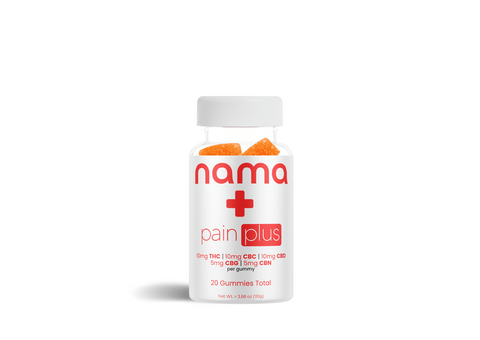
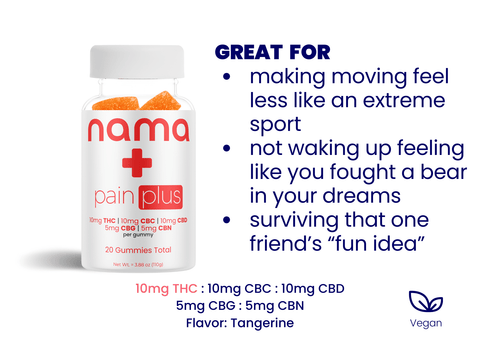
![Euphoria Black Raspberry [10ct]](http://www.namacbd.com/cdn/shop/files/nama_black_raspberry_pouch.png?v=1715285306&width=480)
![Euphoria Black Raspberry [10ct]](http://www.namacbd.com/cdn/shop/files/nama_black_raspberry_nutrition_label.png?v=1715285313&width=480)
![Euphoria Kiwi Raspberry [10ct]](http://www.namacbd.com/cdn/shop/files/nama_kiwi_raspberry_pouch.png?v=1715285056&width=480)
![Euphoria Kiwi Raspberry [10ct]](http://www.namacbd.com/cdn/shop/files/nama_euphoria_kiwiraspberry_nutrition_facts.jpg?v=1715873960&width=480)
![Euphoria Triple Berry [10ct]](http://www.namacbd.com/cdn/shop/files/nama_euphoria_triple_berry_pouch.png?v=1715286095&width=480)
![Euphoria Triple Berry [10ct]](http://www.namacbd.com/cdn/shop/files/nama_euphoria_tripleberry_nutrition_facts.jpg?v=1715873950&width=480)
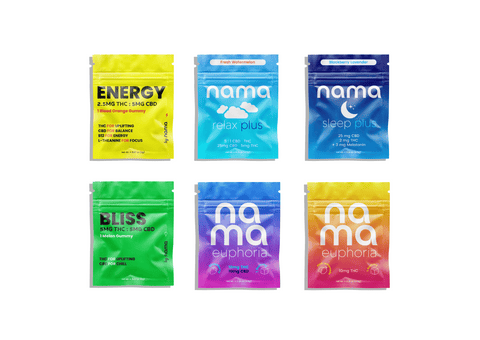
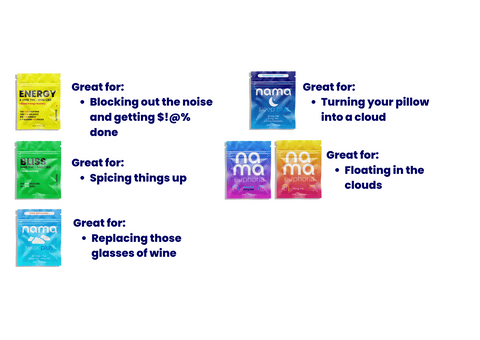
![Buzz Drops™ [THC Drink Drops]](http://www.namacbd.com/cdn/shop/files/nama_thc_buzz_drops.png?v=1711412866&width=480)
![Buzz Drops™ [THC Drink Drops]](http://www.namacbd.com/cdn/shop/files/buzz-drop-wine-comparison.png?v=1736882023&width=480)
![Buzz Packs™ [THC and CBD Powder Drink Mix]](http://www.namacbd.com/cdn/shop/files/nama_buzz_packs_thc_drink_pack_white_background.png?v=1741884660&width=480)
![Buzz Packs™ [THC and CBD Powder Drink Mix]](http://www.namacbd.com/cdn/shop/files/Buzz_Packs_Label.png?v=1741884660&width=480)
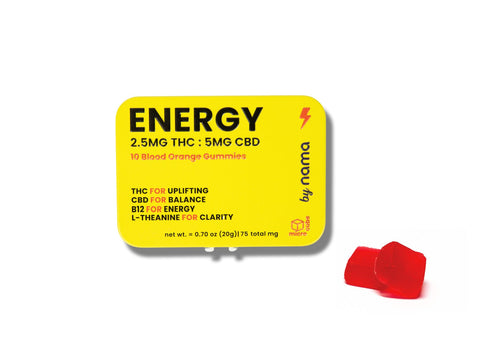
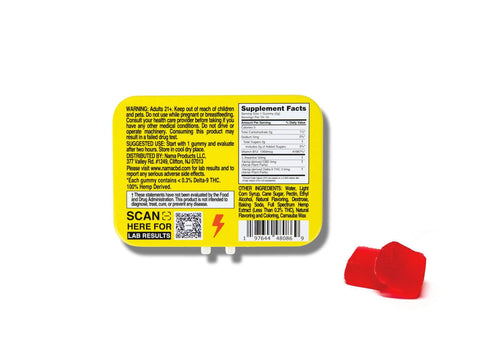
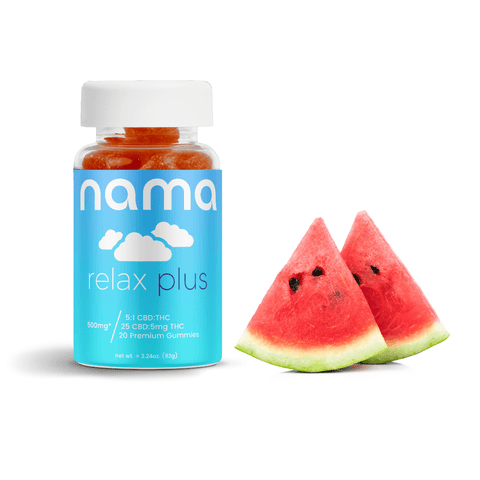
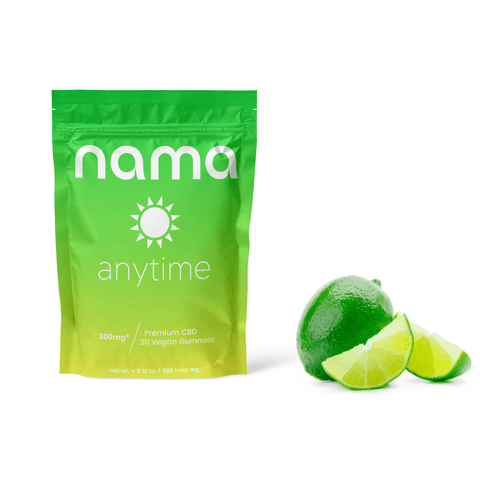
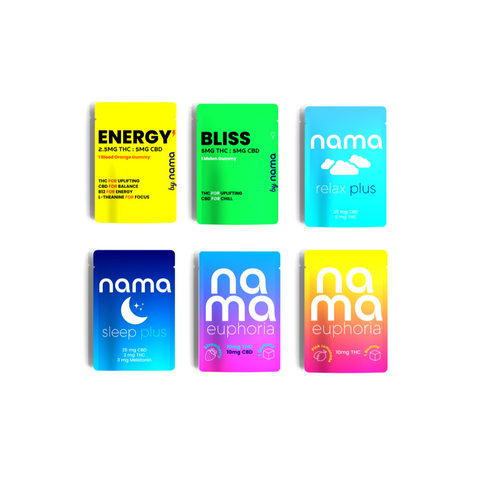
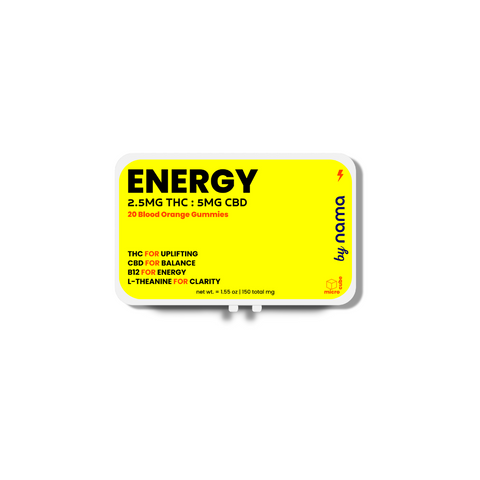

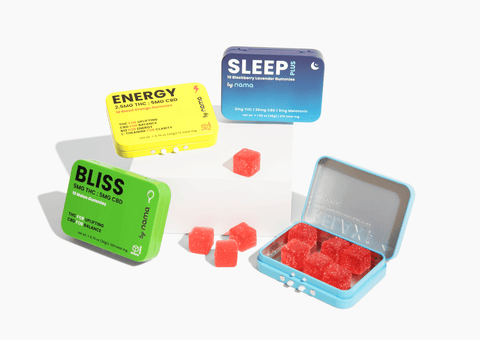
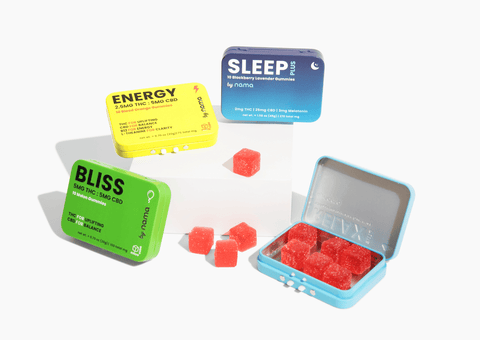
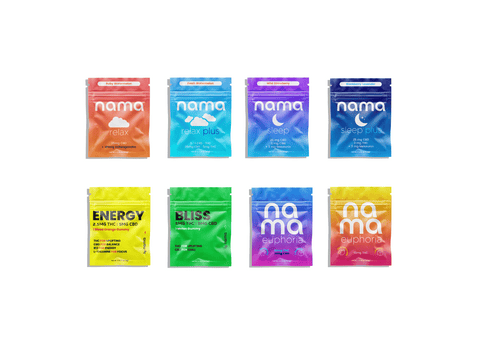


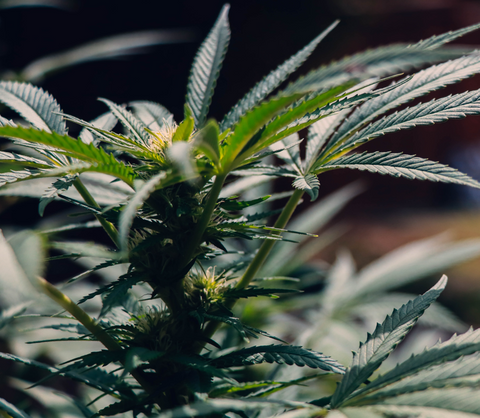


Comments (0)
There are no comments for this article. Be the first one to leave a message!